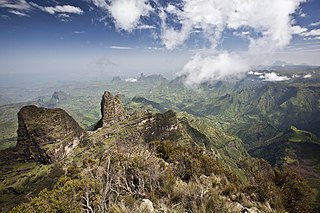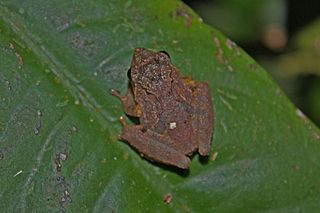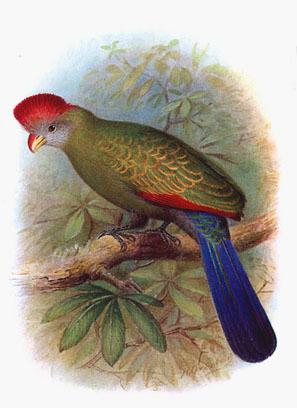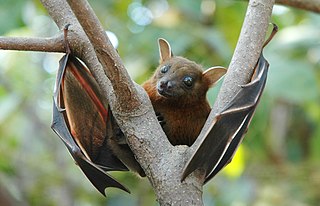
The geography of Malaysia includes both the physical and the human geography of Malaysia, a Southeast Asian country made up of two major landmasses separated by water—Peninsular Malaysia to the West and East Malaysia to the East—and numerous smaller islands that surround those landmasses. Peninsular Malaysia is on the southernmost part of the Malay Peninsula, south of Thailand, north of Singapore and east of the Indonesian island of Sumatra; East Malaysia comprises most of the northern part of Borneo island, and shares land borders with Brunei to the north and Indonesian Borneo to the south.

The Cameron Highlands is a district in Pahang, Malaysia, occupying an area of 712.18 square kilometres (274.97 sq mi). To the north, its boundary touches that of Kelantan; to the west, it shares part of its border with Perak. Situated at the northwestern tip of Pahang, Cameron Highlands is approximately 90 kilometres (56 mi) east from Ipoh, roughly 200 kilometres (120 mi) north from Kuala Lumpur or about 355 kilometres (221 mi) from Kuantan, the capital of Pahang. It is the smallest municipality in the state.

The Ethiopian Highlands is a rugged mass of mountains in Ethiopia in Northeast Africa. It forms the largest continuous area of its elevation in the continent, with little of its surface falling below 1,500 m (4,900 ft), while the summits reach heights of up to 4,550 m (14,930 ft). It is sometimes called the "Roof of Northeastern Africa" due to its height and large area. It is the only country in the region with such a high elevated surface. This elevated surface is bisected diagonally by the Great East African Rift System which extends from Syria to Mozambique across the East African Lakes. Most of the Ethiopian Highlands are part of central and northern Ethiopia, and its northernmost portion reaches into Eritrea.

The tailless fruit bat is a species of fruit bat in the family Pteropodidae.

The black-capped fruit bat is a species of megabat in the monotypic genus Chironax.

Heliophorus epicles, commonly known as the purple sapphire, is a species of lycaenid or blue butterfly found in Asia. The species was first described by Jean Baptiste Godart in 1823.

The Tropical Andes is northern of the three climate-delineated parts of the Andes, the others being the Dry Andes and the Wet Andes. The Tropical Andes' area spans 1,542,644 km2 (595,618 sq mi).

The Burmese whiskered myotis or Burmese whiskered bat is a species of vesper bat. It is found in China, India, Myanmar, Laos, and Vietnam.
Limnonectes nitidus is a species of frog in the family Dicroglossidae. It is endemic to Peninsular Malaysia where it is only known from the Cameron Highlands and Fraser's Hill, both in Pahang state.

Philautus petersi is a species of frog in the family Rhacophoridae. It is found in Indonesia, Malaysia, Thailand, and possibly Brunei. Its natural habitats are subtropical or tropical moist lowland forests and subtropical or tropical moist montane forests. It is threatened by habitat loss.

Bannerman's turaco is a species of bird in the family Musophagidae. It is endemic to Cameroon. In French it is known as touraco de Bannerman or touraco doré. Its scientific and common names honour the ornithologist David Armitage Bannerman. Its natural habitat is subtropical or tropical moist montane forests. It is threatened by habitat destruction and the International Union for Conservation of Nature has listed it as an "endangered species".

The Malayan whistling thrush or Malaysian whistling-thrush is a species of bird in the family Muscicapidae. It is endemic to the Malay Peninsula. Due primarily to habitat loss, its population is thought to be in decline.

The red-naped trogon is a species of bird in the family Trogonidae. It is found in Brunei, Indonesia, Malaysia, and Thailand. Its natural habitat is subtropical or tropical moist lowland forests. It is threatened by habitat loss.

The Malayan weasel or Malay weasel is a weasel species native to the Malay Peninsula and the islands of Sumatra and Borneo. It is listed as Least Concern on the IUCN Red List.
Heptapleurum nanocephalum is a species of plant in the family Araliaceae. It is a tree endemic to Peninsular Malaysia. Its natural habitat is montane rain forests. It is threatened by habitat loss. It was previously placed in the genus Schefflera.

The lesser short-nosed fruit bat is a species of megabat within the family Pteropodidae. It is a small bat that lives in South Asia and Southeast Asia. It weighs between 21 and 32 grams, and measures 70 to 127 millimetres. It occurs in many types of habitat, but most frequently in disturbed forest, including lower montane forest and tropical lowland rain forest, plus gardens, mangroves, and vegetation on beaches.

Hylarana macrodactyla is a species of frog in the family Ranidae. It is also known as the Guangdong frog, three-striped grass frog and the marbled slender frog.
The Sungai Kial Forest Reserve is a protected area of tropical rainforest habitat in Cameron Highlands, Pahang, Malaysia. The reserve is 100–250 km2 (39–97 sq mi), but is connected to, and part of, a large forest complex in the Cameron Highlands Forest Complex. Here the altitude ranges from 1,000–2,000 m (3,300–6,600 ft), making the likely forest type tropical hill or montane forest, and most likely possessing a high representation of tree species in the dipterocarp family.

The Peninsular Malaysian montane rain forests is an ecoregion on Malay Peninsula. It occupies the mountainous spine of the peninsula in Malaysia and southernmost Thailand. It is in the tropical and subtropical moist broadleaf forests biome.

Tenompok Forest Reserve is a protected forest reserve in Ranau District of West Coast Division, Sabah, Malaysia. It was designated as a Class 1 Forest Reserve by the Sabah Forestry Department in 1984. Its area is 1,984 hectares (19.84 km2). A former reserve, the Kampung Bundu Tuhan Native Residence Reserve, occupied what is now the eastern portion of Tenompok. The reserve is mountainous, reaching 1,660 metres (5,450 ft) above sea level. Vegetation consists of lower montane forest and montane kerangas forest. Both share a similar species composition, although trees in montane keranga forests are smaller. The reserve's Tomis River is a tributary of the Tuaran River. The area of the reserve has never received significant logging, aside from small amount near what are now its borders. This small logging is thought to be carried out by nearby villages for local use. There is also some agricultural encroachment. The reserve lies between Kinabalu Park and Crocker Range National Park. One farmer has a house within the reserve. There are several settlements around the reserve, along with agricultural land.
















